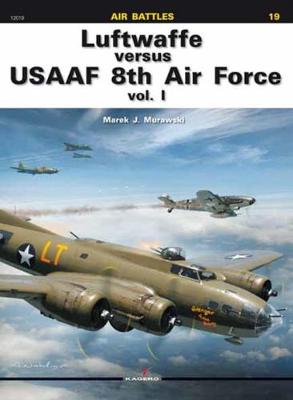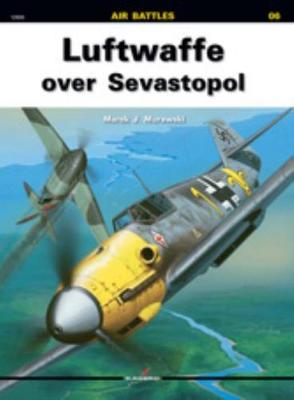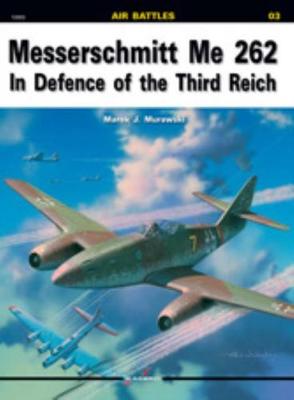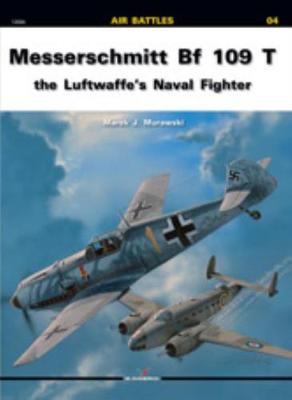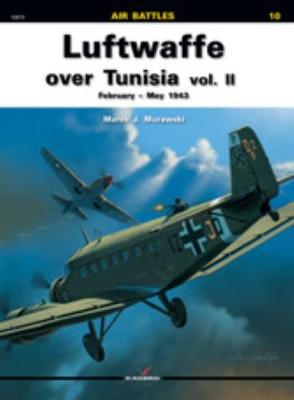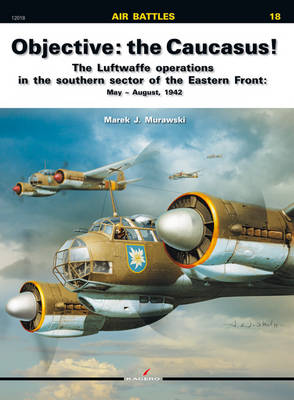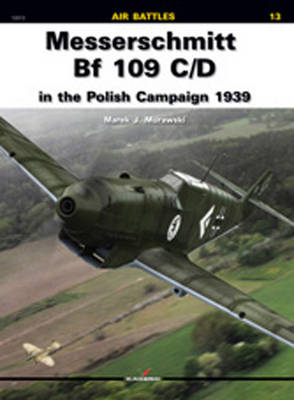Air Battles
7 total works
Luftwaffe versus USAAF 8th Air Force Vol. I – Another remarkable book in Air Battles series gives its readers exceptional chance to follow the history of relentless combat fought between Luftwaffe and USAF in the skies over Europe. The story begins with the first Flying Fortresses air raid against targets in France on August 17, 1942 and continues till the last day of April 1943. Precise air clashes descriptions complemented by pilots’ personal stories are one of the unique features of this book which also includes 109 archival photos and 8 colour profiles of described aircrafts.
Highly illustrated combat history of the Luftwaffe over Sevastopol. The Siege of Sevastopol took place from 30 October 1941 to 4 July 1942 between German forces and those of the Red Army, the Black Sea Fleet and elements of the Red Air Force over the control for the main Soviet Black Sea Fleet naval base during the Second World War.
On 21 May 1942 the Germans launched a bombing and bombardment of the city. On 2 June, the main barrage began, and all of the resources of the German Luftwaffe’s Luftflotte 4, commanded by Wolfram von Richthofen, descended on their targets, continuing for five days before the main attack began. This book features all the aircraft involved, details of the operations and colour artwork.
Content includes the Assault on the Crimea; Operation Trappenjagd and Operation Storfang.
Contains black and white photos, pull out colour profile section and free decal sheet in 1:32, 1:48 and 1:72 scale.
About the Series
Air Battles is a series of books focusing on World War II air battles of specific aircraft and units. Each volume contains information on the planes involved, lists of scores, pilot reports and portraits, colour profile artwork and maps. Over 50 photographs feature in each book, with free extras for modellers, such as masking foil and decal sheets.
On 21 May 1942 the Germans launched a bombing and bombardment of the city. On 2 June, the main barrage began, and all of the resources of the German Luftwaffe’s Luftflotte 4, commanded by Wolfram von Richthofen, descended on their targets, continuing for five days before the main attack began. This book features all the aircraft involved, details of the operations and colour artwork.
Content includes the Assault on the Crimea; Operation Trappenjagd and Operation Storfang.
Contains black and white photos, pull out colour profile section and free decal sheet in 1:32, 1:48 and 1:72 scale.
About the Series
Air Battles is a series of books focusing on World War II air battles of specific aircraft and units. Each volume contains information on the planes involved, lists of scores, pilot reports and portraits, colour profile artwork and maps. Over 50 photographs feature in each book, with free extras for modellers, such as masking foil and decal sheets.
This book covers the combat history of Me 262s in Defence of the Reich. The Messerschmitt Me 262 Schwalbe ("Swallow") was the world's first operational jet-powered fighter aircraft. Design and development of the aircraft began before World War II, but engine problems meant the aircraft did not reach operational status until the summer of 1944.
In combat, when properly flown, it proved to be virtually untouchable and able to outrun its Allied counterparts by as much 100mph. The Me 262 claimed a total of 509 Allied kills during the course of the war, largely in defence of its own country.
Content includes revolutionary design, Kommando Nowotny, Jagdgeschwader 7, March-May 1945.
With colour artworks, numerous photographs, line drawings and a free decal sheet.
About the Series
Air Battles is a series of books focusing on World War II air battles of specific aircraft and units. Each volume contains information on the planes involved, lists of scores, pilot reports and portraits, colour profile artwork and maps.
In combat, when properly flown, it proved to be virtually untouchable and able to outrun its Allied counterparts by as much 100mph. The Me 262 claimed a total of 509 Allied kills during the course of the war, largely in defence of its own country.
Content includes revolutionary design, Kommando Nowotny, Jagdgeschwader 7, March-May 1945.
With colour artworks, numerous photographs, line drawings and a free decal sheet.
About the Series
Air Battles is a series of books focusing on World War II air battles of specific aircraft and units. Each volume contains information on the planes involved, lists of scores, pilot reports and portraits, colour profile artwork and maps.
Lavishly illustrated, this book covers the combat history of the Messerschmitt Bf 109T. The Messerschmitt Bf 109 was a German World War II fighter aircraft designed by Willy Messerschmitt in the early 1930s. It was one of the first true modern fighters of the era. Having gone through its baptism of fire in the Spanish Civil War, the Bf 109 was still in service at the dawn of the jet age at the end of World War II.
In the fall of 1938, the Technische Amt RLM (Technical Office of the Reichsluftfahrtministerium or State Ministry of Aviation) requested that Messerschmitt’s Augsburg design bureau draw up plans for a carrier-borne version of the Bf 109E fighter, to be designated Bf 109T (the"T" standing for Träger or Carrier). The resulting aircraft were nicknamed 'Toni' by their pilots.
Content includes carrier Graf Zeppelin and her aircraft; operational service, including its new role over the North Sea and comes with free masking foil and decals.
About the Series
Air Battles is a series of books focusing on World War II air battles of specific aircraft and units. Each volume contains information on the planes involved, lists of scores, pilot reports and portraits, colour profile artwork and maps.
In the fall of 1938, the Technische Amt RLM (Technical Office of the Reichsluftfahrtministerium or State Ministry of Aviation) requested that Messerschmitt’s Augsburg design bureau draw up plans for a carrier-borne version of the Bf 109E fighter, to be designated Bf 109T (the"T" standing for Träger or Carrier). The resulting aircraft were nicknamed 'Toni' by their pilots.
Content includes carrier Graf Zeppelin and her aircraft; operational service, including its new role over the North Sea and comes with free masking foil and decals.
About the Series
Air Battles is a series of books focusing on World War II air battles of specific aircraft and units. Each volume contains information on the planes involved, lists of scores, pilot reports and portraits, colour profile artwork and maps.
This title contains detailed coverage of the little-known exploits of the Luftwaffe against the RAF and USAAF in Tunisia during World War II. The second volume covers content detailing: The battle for Mareth-Stellung; Operation Flax; The Defeat in Africa.
Contains black and white photos, a pull out colour profile section and free decal sheet in 1:32, 1:48 and 1:72 scale.
About the Series
Air Battles is a series of books focusing on World War II air battles of specific aircraft and units. Each volume contains information on the planes involved, lists of scores, pilot reports and portraits, colour profile artwork and maps. Over 50 photographs feature in each book, with free extras for modellers, such as masking foil and decal sheets.
Contains black and white photos, a pull out colour profile section and free decal sheet in 1:32, 1:48 and 1:72 scale.
About the Series
Air Battles is a series of books focusing on World War II air battles of specific aircraft and units. Each volume contains information on the planes involved, lists of scores, pilot reports and portraits, colour profile artwork and maps. Over 50 photographs feature in each book, with free extras for modellers, such as masking foil and decal sheets.
Located on the peripheries of Turkey, Iran, and Russia, and rich in natural resources such as oil, coal and peat, the Caucasus has been an arena for political, military, religious, and cultural rivalries and expansionism for centuries. These resources were immensely important to Hitler and his war effort, especially as the war became global and much of his fuel supply was cut off.
By February 1942, the Army High Command had begun to look to the Caucasus to solve its massive fuel shortage problems, and on 5 April 1942, Hitler unveiled his plan now known as"Case Blue".
Initially successful, the German army was eventually overstretched by the vast area they had captured, and consequently the offensive was stopped by the Red Army in Chechnya in September during the North Caucasian Strategic Defensive Operation.
This impressive, full-colour book examines the role the Luftwaffe played in this ambitious operation, providing ample material for modellers and information on this key campaign for historians and enthusiasts.
About the Series
Air Battles is a series of books focusing on World War II air battles of specific aircraft and units. Each volume contains information on the planes involved, lists of scores, pilot reports and portraits, colour profile artwork and maps.
By February 1942, the Army High Command had begun to look to the Caucasus to solve its massive fuel shortage problems, and on 5 April 1942, Hitler unveiled his plan now known as"Case Blue".
Initially successful, the German army was eventually overstretched by the vast area they had captured, and consequently the offensive was stopped by the Red Army in Chechnya in September during the North Caucasian Strategic Defensive Operation.
This impressive, full-colour book examines the role the Luftwaffe played in this ambitious operation, providing ample material for modellers and information on this key campaign for historians and enthusiasts.
About the Series
Air Battles is a series of books focusing on World War II air battles of specific aircraft and units. Each volume contains information on the planes involved, lists of scores, pilot reports and portraits, colour profile artwork and maps.
Unwanted at its inception, the Bf 109 became the most widely produced, the most respected, and the most varied Luftwaffe fighter. Over 30,000 of the nine major variants of Willy Messerschmitt's versatile aircraft were built.
The prototype Bf 109V-1 was ready in August, 1935. Like its predecessor, the Bf 108, it was a low wing, all metal construction monoplane, with flush rivets, leading edge slats, and retractable landing gear. Its single-seat cockpit had a fully enclosed canopy. While none of the developments were revolutionary in 1935, Messerschmitt first put them all together in the Bf 109. Powered by a 695 HP twelve cylinder Rolls-Royce Kestrel engine, the Bf 109V-1 first flew in September of that year.
When Germany attacked Poland in 1939, the Luftwaffe had almost 1000 Bf 109s in service, and this book details that first fateful aerial campaign launched in September 1939, also looking at the German Luftwaffe’s most distinguished fighter’s exploits.
About the series
Air Battles is a series of books focusing on World War II air battles of specific aircraft and units. Each volume contains information on the planes involved, lists of scores, pilot reports and portraits, colour profile artwork and maps. Over 50 photographs feature in each book, with free extras for modellers, such as masking foil and decal sheets.
The prototype Bf 109V-1 was ready in August, 1935. Like its predecessor, the Bf 108, it was a low wing, all metal construction monoplane, with flush rivets, leading edge slats, and retractable landing gear. Its single-seat cockpit had a fully enclosed canopy. While none of the developments were revolutionary in 1935, Messerschmitt first put them all together in the Bf 109. Powered by a 695 HP twelve cylinder Rolls-Royce Kestrel engine, the Bf 109V-1 first flew in September of that year.
When Germany attacked Poland in 1939, the Luftwaffe had almost 1000 Bf 109s in service, and this book details that first fateful aerial campaign launched in September 1939, also looking at the German Luftwaffe’s most distinguished fighter’s exploits.
About the series
Air Battles is a series of books focusing on World War II air battles of specific aircraft and units. Each volume contains information on the planes involved, lists of scores, pilot reports and portraits, colour profile artwork and maps. Over 50 photographs feature in each book, with free extras for modellers, such as masking foil and decal sheets.
